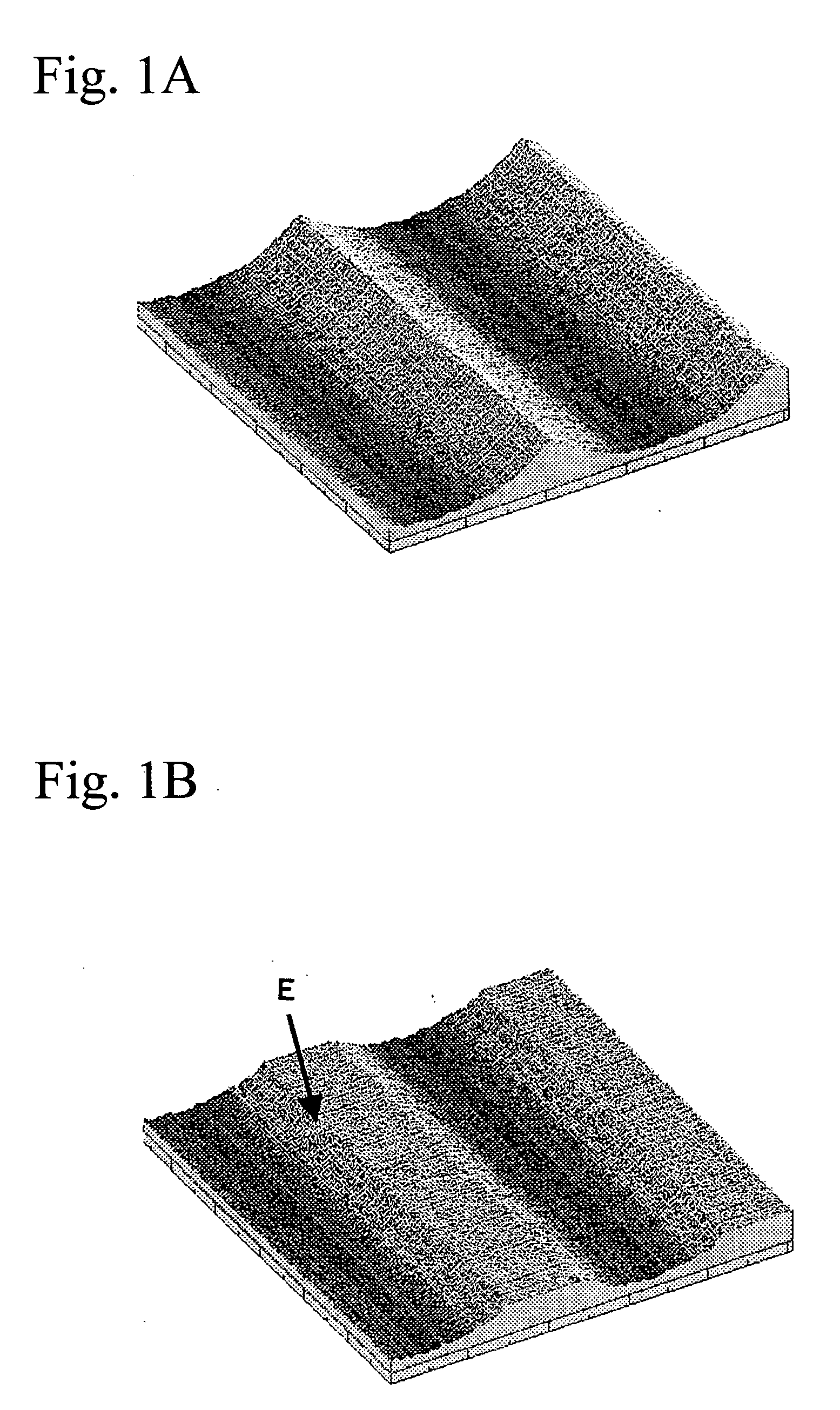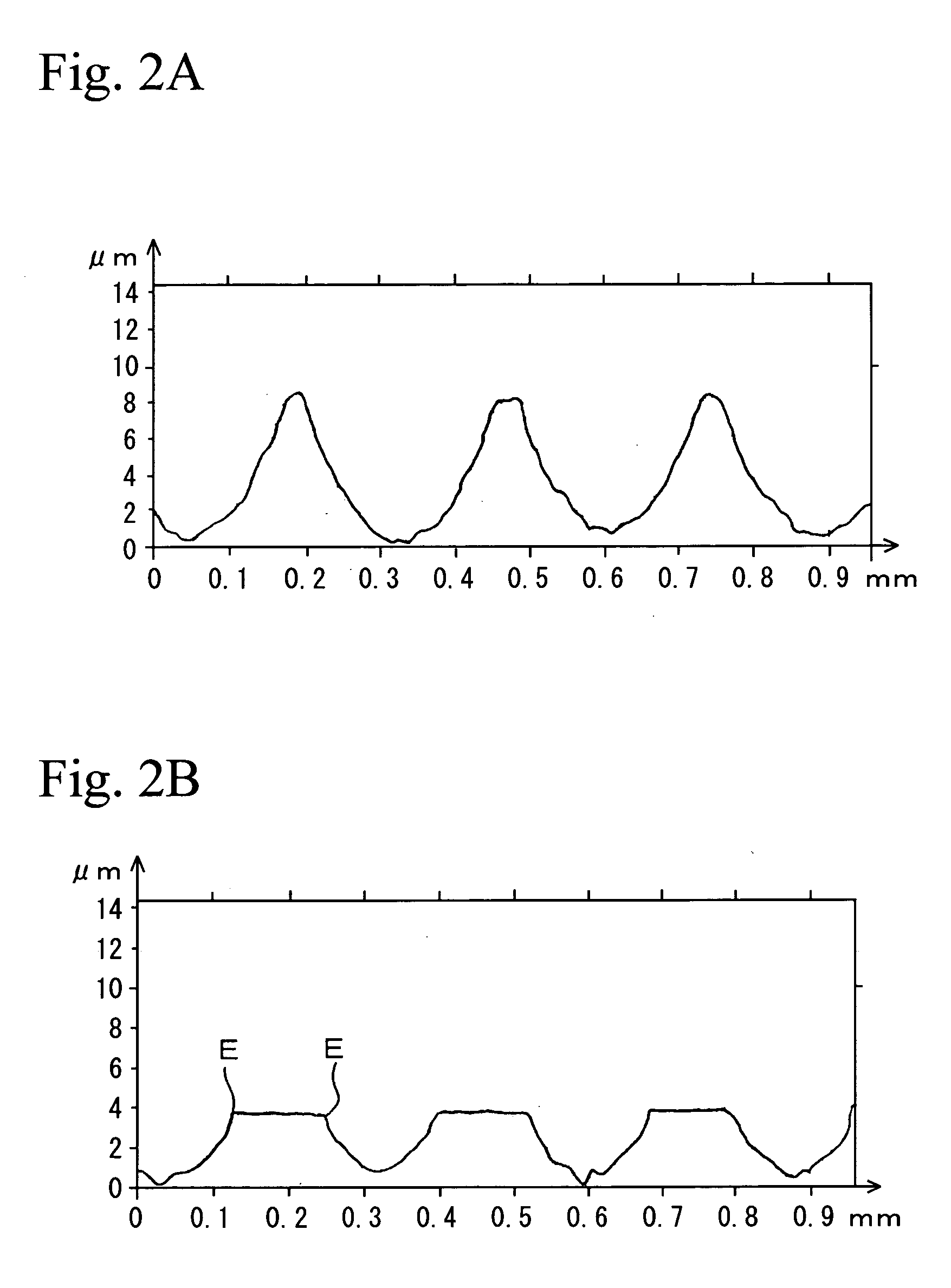Metallic sliding member, piston for internal combustion engine, method of surface-treating these, and apparatus therefor
a technology of internal combustion engine and sliding member, which is applied in mechanical equipment, transportation and packaging, coatings, etc., can solve the problems of insufficient function of solid lubricant, low frictional resistance of solid lubricant, and difficulty in controlling the thickness of solid lubricant film, etc., to achieve easy treatment of curved surfaces, low manufacturing cost, and raised hardness of surface layer portion
- Summary
- Abstract
- Description
- Claims
- Application Information
AI Technical Summary
Benefits of technology
Problems solved by technology
Method used
Image
Examples
examples
[0041] The invention is more specifically described below while referring to a specific example.
A. Preparation of Sample
[0042] A piston of typical shape and size was fabricated. On the outer circumference of the piston, trapezoidal convex portions (stripes) as shown in FIG. 6D were formed, at the interval of convex portions of about 250 μm and height of convex portions of about 10 μm. Scaly fine powder of molybdenum disulfide of average size of 4 μm and purity of 98.6% by weight was blasted at the side surface of the piston at a distance of 50 mm by compressed air at a pressure of 8 atmospheres. The blasting duration to the piston was 8 minutes. FIG. 7 is an electron microscope photograph (500 times) of the molybdenum disulfide used herein.
B. Measurement of Friction Loss
[0043] The sample was installed in an internal combustion engine, and the friction loss was measured by running-in. In this measurement of friction loss, the friction loss horsepower of the internal combustion ...
PUM
| Property | Measurement | Unit |
|---|---|---|
| depth | aaaaa | aaaaa |
| gauge pressure | aaaaa | aaaaa |
| speed | aaaaa | aaaaa |
Abstract
Description
Claims
Application Information
 Login to View More
Login to View More - R&D
- Intellectual Property
- Life Sciences
- Materials
- Tech Scout
- Unparalleled Data Quality
- Higher Quality Content
- 60% Fewer Hallucinations
Browse by: Latest US Patents, China's latest patents, Technical Efficacy Thesaurus, Application Domain, Technology Topic, Popular Technical Reports.
© 2025 PatSnap. All rights reserved.Legal|Privacy policy|Modern Slavery Act Transparency Statement|Sitemap|About US| Contact US: help@patsnap.com



